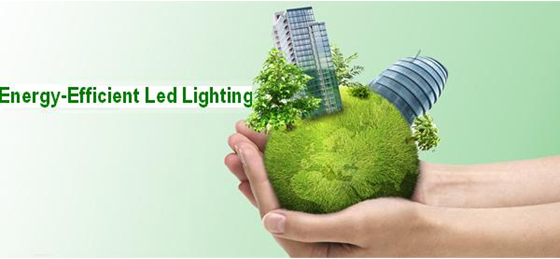LED – light emitting diode is the latest craze that is inspiring home owners across the globe. You will be amazed to know that these forms of lighting are in existence from the 1970s as replacements for incandescent and neon indicator lights on electronic equipments. The traditional bulbs and tubelights we see offer only a small portion of light. Nearly 90% is wasted as heat. But with LED the scenario is exactly the opposite. They require only 10% of the electricity in order to produce the same amount of light.
 Before we go ahead and discuss the benefits of the LED let us check out hoe they operate. LEDs differ from the conventional light bulbs in the way the produce lights. The incandescent lamps have a tungsten filament that is inside a glass bulb which is filled with inert gas. The bulb starts emitting light when the tungsten gets heated. In case of the LEDs the glass tube is coated with phosphor along with a little amount of mercury. The electric arc instigates the mercury atom which in turn starts emitting the ultraviolet radiation. The bulb starts emitting light when the UV rays strikes the phosphor coating.
Before we go ahead and discuss the benefits of the LED let us check out hoe they operate. LEDs differ from the conventional light bulbs in the way the produce lights. The incandescent lamps have a tungsten filament that is inside a glass bulb which is filled with inert gas. The bulb starts emitting light when the tungsten gets heated. In case of the LEDs the glass tube is coated with phosphor along with a little amount of mercury. The electric arc instigates the mercury atom which in turn starts emitting the ultraviolet radiation. The bulb starts emitting light when the UV rays strikes the phosphor coating.
These LEDs are available in RED, blue and green variations. The difference is due to the presence of the semiconducting materials. RED LED have aluminum gallium arsenide (AlGaAs), Green LED have aluminum gallium phosphide (AlGaP) and the blue one has indium gallium nitride (InGaN). However “white” light is required in most of the LED applications but the LED don’t produce this light. This “white” light needs to be created. There are 3 different methods.
In the first method, all the three LEDs are used (namely red, blue and green) to formulate multiple LED chips which are referred to as RGB LED. By mixing the different wavelengths of these LEDs a “white” light is emitted. However this chip is expensive compared to the other methods.
In the second method a single semiconducting material is used. Generally the blue Indium-Gallium-Nitride (InGaN) LED is used with yellow phosphor to create the “white” light. This method is quite affordable and hence it is most commonly used one.
Advantages of LEDs
- LED bulbs are highly efficient compared to the regular ones. Each bulb produces more light compared to the regular ones. This is in fact increasing with the newer versions of the LED.
- LED bulbs emit very less heat and hence they are cool compared to the incandescent bulbs.
- The light emitting diode bulbs come in very small size. You can find bulbs as small as 2mm.
- These bulbs last for a longer duration than the traditional bulbs. As per reports they produce light for approximately 35,000 to 50,000 hours compared to the 10,000 to 15,000 hours of the traditional lights.
- As the LEDs are solid state components they are more resistant to external shocks and does not break easily. Hence they last for a longer duration even if subjected to jarring and vibrations unlike the traditional bulbs. This makes them highly popular.
- Compared to all the forms and modes of lighting, LED is the most environmental friendly of the lot.
LED lights are here to say. Considering all the different efforts we are taking in order to ensure a safer and greener environment for our next generation, LED lights are the way to go. By using the least amount of electricity they emit such great light and that too without burning a hole in your pocket. And if the latest trends are anything to go by, then in the near future the LED bulbs will capture the market.
Author Bio: Jean walker is an avid reader who loves to blog on anything that will be of beneficial to the readers. You can find her write ups on languages, gadgets, home décor, education, home cleaning service, yoga and so on. You can connect with her through her Facebook account or you can tweet to her on her twitter account. If you anxious to know more information about Tree Removal Service please visit: http://www.bootstreeservices.com.au/